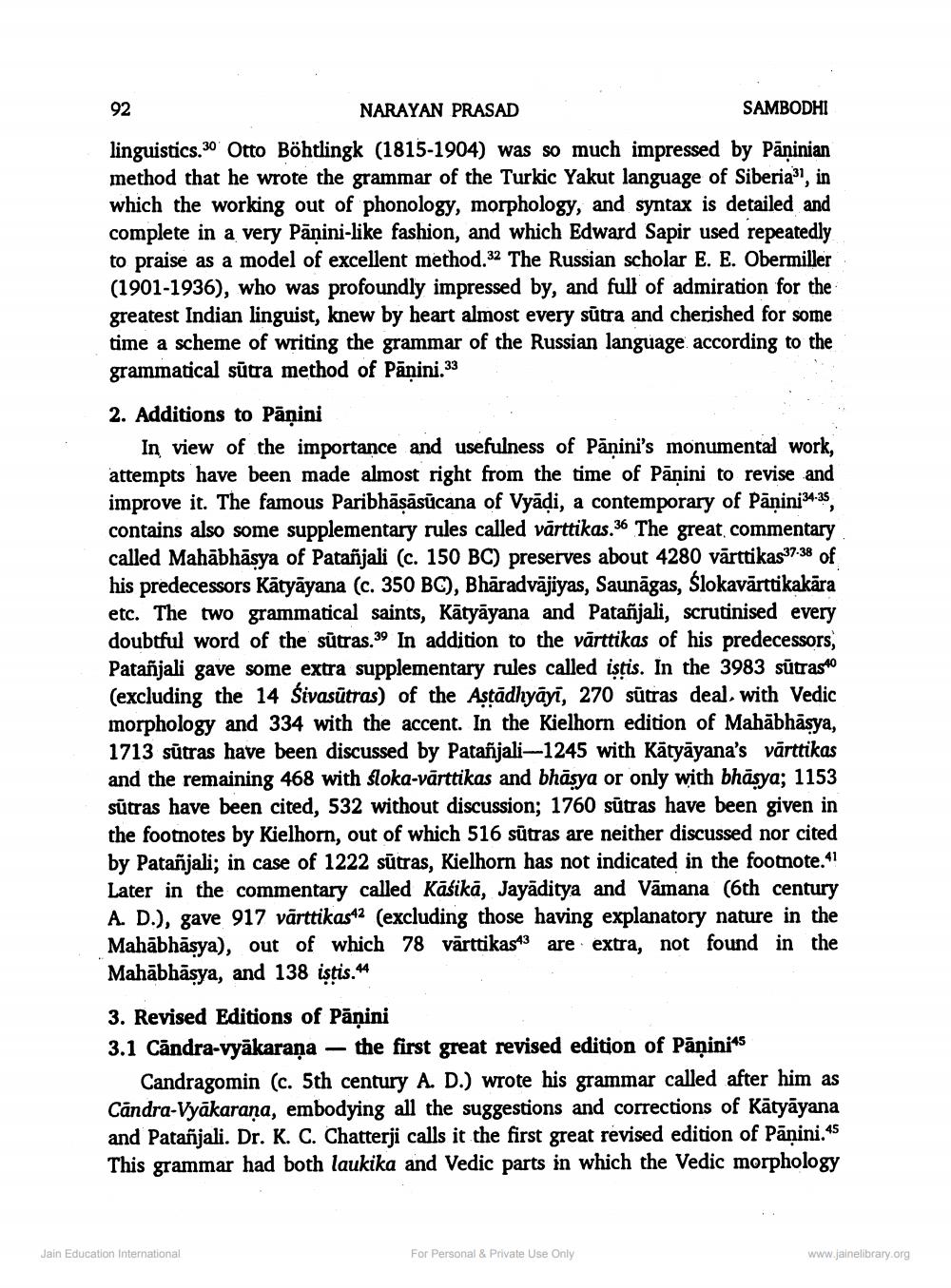________________
92
NARAYAN PRASAD
SAMBODHI
linguistics.30' Otto Böhtlingk (1815-1904) was so much impressed by Paninian method that he wrote the grammar of the Turkic Yakut language of Siberia?', in which the working out of phonology, morphology, and syntax is detailed and complete in a very Pānini-like fashion, and which Edward Sapir used repeatedly to praise as a model of excellent method.32 The Russian scholar E. E. Obermiller (1901-1936), who was profoundly impressed by, and full of admiration for the greatest Indian linguist, knew by heart almost every sutra and cherished for some time a scheme of writing the grammar of the Russian language according to the grammatical sūtra method of Pāṇini. 33 2. Additions to Pāņini
In view of the importance and usefulness of Pāṇini's monumental work, attempts have been made almost right from the time of Panini to revise and improve it. The famous Paribhāsasūcana of Vyādi, a contemporary of Pāņini34-35, contains also some supplementary rules called vārttikas.36 The great commentary called Mahābhāsya of Patanjali (c. 150 BC) preserves about 4280 vārttikas37-38 of his predecessors Kātyāyana (c. 350 BC), Bhāradvājiyas, Saunāgas, Slokavārttikakāra etc. The two grammatical saints, Kātyāyana and Patañjali, scrutinised every doubtful word of the sūtras.39 In addition to the vārttikas of his predecessors, Patañjali gave some extra supplementary rules called iştis. In the 3983 sūtrasto (excluding the 14 Śivasūtras) of the Astādhyāyī, 270 sūtras deal, with Vedic morphology and 334 with the accent. In the Kielhorn edition of Mahābhāsya, 1713 sūtras have been discussed by Patañjali-1245 with Kätyāyana's vārttikas and the remaining 468 with Sloka-vārttikas and bhāsya or only with bhāsya; 1153 sūtras have been cited, 532 without discussion; 1760 sūtras have been given in the footnotes by Kielhorn, out of which 516 sūtras are neither discussed nor cited by Patañjali; in case of 1222 sūtras, Kielhorn has not indicated in the footnote.41 Later in the commentary called Kāśikā, Jayāditya and Vāmana (6th century A. D.), gave 917 vārttikas42 (excluding those having explanatory nature in the Mahābhāsya), out of which 78 vārttikas43 are extra, not found in the Mahābhāsya, and 138 istis.44 3. Revised Editions of Pāņini 3.1 Candra-vyākaraņa – the first great revised edition of Pāņini"
Candragomin (c. 5th century A. D.) wrote his grammar called after him as Candra-Vyakarana, embodying all the suggestions and corrections of Kātyāyana and Patañjali. Dr. K. C. Chatterji calls it the first great revised edition of Pāṇini. 45 This grammar had both laukika and Vedic parts in which the Vedic morph
Jain Education International
For Personal & Private Use Only
www.jainelibrary.org




